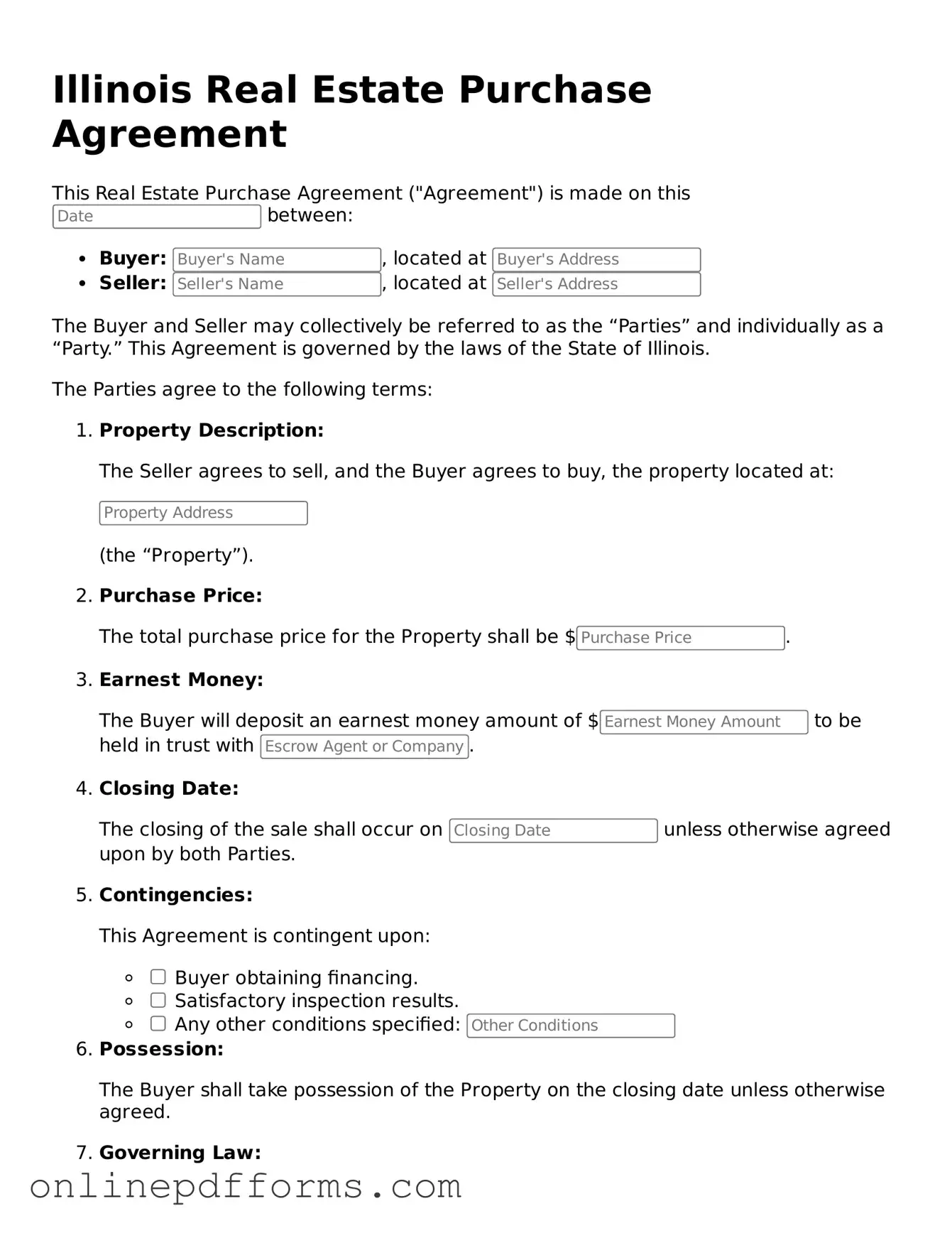The Illinois Real Estate Purchase Agreement form shares similarities with the Residential Purchase Agreement, which is commonly used in many states across the country. Both documents outline the terms and conditions of a real estate transaction, including the purchase price, financing details, and contingencies. They serve as a legally binding contract between the buyer and seller, ensuring that both parties understand their rights and obligations throughout the sale process.
Another document that resembles the Illinois Real Estate Purchase Agreement is the Commercial Purchase Agreement. While the Illinois version is tailored for residential transactions, the commercial counterpart addresses the complexities of buying and selling commercial properties. Both agreements detail essential elements such as the purchase price, closing date, and any contingencies that may apply, but the commercial version may also include clauses specific to business operations, zoning, and property use.
The Lease Purchase Agreement is yet another document that bears a resemblance to the Illinois Real Estate Purchase Agreement. This type of agreement allows a tenant to rent a property with the option to purchase it at a later date. Like the purchase agreement, it outlines the terms of the transaction, including the rental period, purchase price, and conditions under which the tenant can exercise their option to buy. Both documents aim to protect the interests of both parties while facilitating a smooth transition from renting to ownership.
The Option to Purchase Agreement is similar in that it grants a buyer the right, but not the obligation, to purchase a property within a specified timeframe. This document sets forth the purchase price and the duration of the option. While the Illinois Real Estate Purchase Agreement is a definitive contract for sale, the Option to Purchase Agreement provides flexibility for buyers who may need time to secure financing or assess the property further before committing to a purchase.
The Seller Financing Agreement also shares characteristics with the Illinois Real Estate Purchase Agreement. In situations where a buyer cannot secure traditional financing, the seller may agree to finance the purchase directly. This document outlines the terms of the loan, including interest rates, payment schedules, and consequences for default. Both agreements establish the framework for the transaction, but the Seller Financing Agreement introduces additional financial terms that must be carefully considered by both parties.
The Addendum to Purchase Agreement is another relevant document that complements the Illinois Real Estate Purchase Agreement. This addendum is used to modify or add specific terms to the original agreement, such as repairs, seller concessions, or other contingencies. While the main purchase agreement outlines the overall transaction, the addendum allows for flexibility and adjustments based on negotiations between the buyer and seller, ensuring that all parties are on the same page.
When engaging in the sale of a trailer, it is crucial to utilize a Trailer Bill of Sale, as this legal document accurately records the ownership transfer and delineates key details such as the sale price and trailer specifications. For more information and to access a template for this essential form, visit https://pdftemplates.info/trailer-bill-of-sale-form/.
Lastly, the Real Estate Disclosure Statement is a critical document that aligns with the Illinois Real Estate Purchase Agreement. This statement provides essential information about the property's condition, including any known defects or issues that may affect its value. While the purchase agreement focuses on the transaction itself, the disclosure statement ensures transparency and protects buyers from unforeseen problems after the sale. Both documents work together to create a fair and informed buying process.
